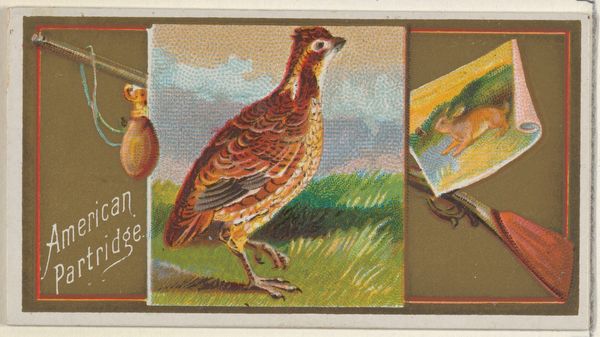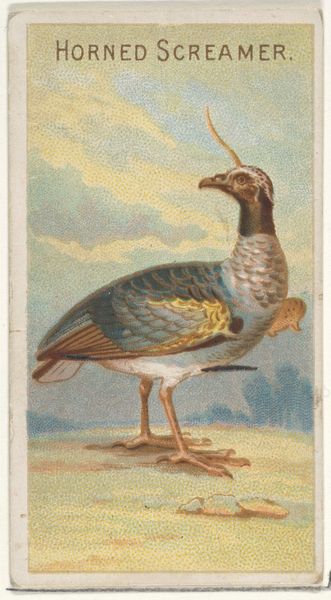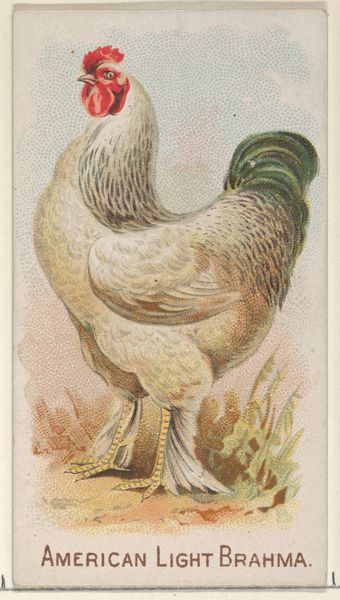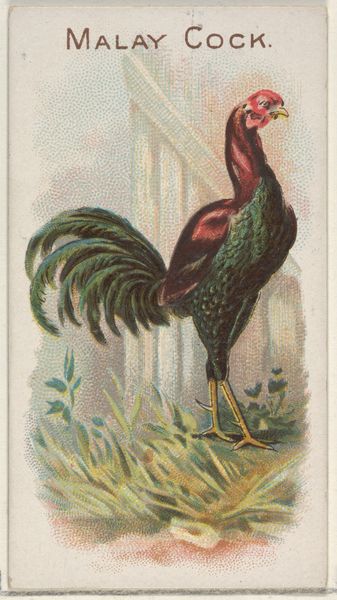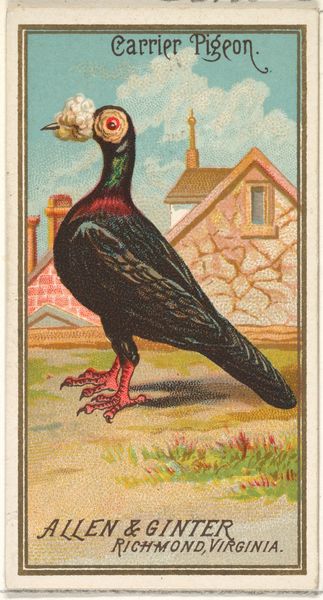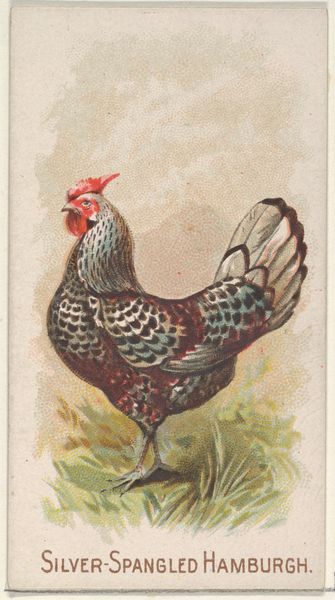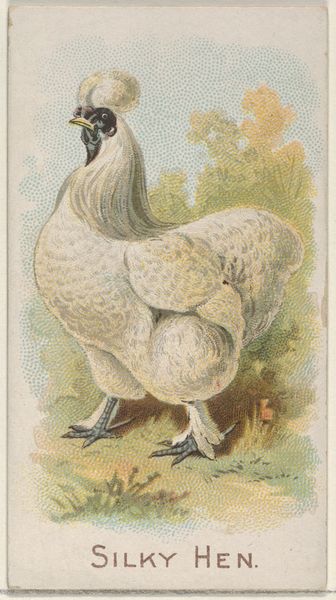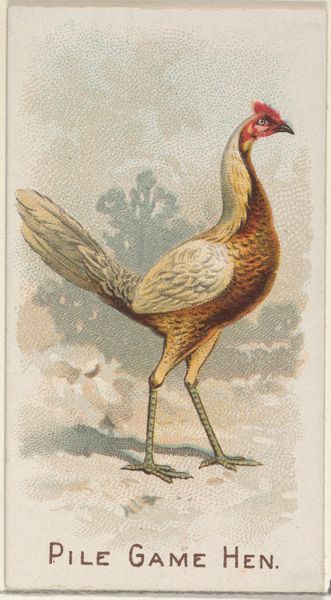
Pheasant, from the Game Birds series (N13) for Allen & Ginter Cigarettes Brands 1889
0:00
0:00
drawing, coloured-pencil, print
#
drawing
#
coloured-pencil
# print
#
impressionism
#
coloured pencil
Dimensions: Sheet: 1 1/2 x 2 3/4 in. (3.8 x 7 cm)
Copyright: Public Domain
Curator: Looking at this small print of a pheasant from 1889, I find it so interesting how Allen & Ginter integrated art into the everyday with these cigarette cards. Editor: It's really beautiful, isn't it? The scale makes me think of something precious, like a jewel or an intricately decorated box. Curator: Exactly! They used colored pencils to render this, part of the Game Birds series, and the details, despite its small size, are quite remarkable. The image captures the symbolism of wealth and status prevalent at the time, connecting consumption habits with displays of cultural capital. What do you think? Editor: I agree. When I look at this object, I think about the layers of production. It's not just the drawing, it's the printing process, the paper stock, and then the ultimate purpose: to be collected along with cigarettes. Labor is at its core. I am intrigued by the materials: the blend of high art technique, as manifested in its rendering with color pencils, combined with commercial purpose and mass manufacture. Curator: Right, and think about what that pheasant *meant*. They were not just representing fauna, but projecting status onto their consumers. They weren't meant as accurate field guides, more like pocket emblems of elevated living. The brand was, quite literally, framing luxury! Editor: It makes me think about how the very concept of value shifts across different spheres, how a drawing transforms into an object of desire through commerce, through industrial output that both enhances and somehow cheapens this inherent value as the prints get disseminated. Curator: It’s all a play on accessibility, making this 'high art' subject readily consumable. Even today, we respond to that layering. Editor: Looking at this pheasant then, both as a tiny meticulously made artwork but equally a consumer product, changes how one might engage with images then, and now. Thanks to art's many lives, we see that those echoes last today.
Comments
No comments
Be the first to comment and join the conversation on the ultimate creative platform.

